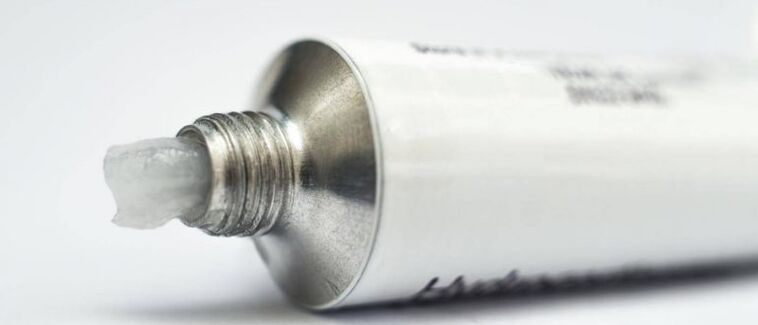Psoriasis is an autoimmune, non-infectious disease characterized by severe redness, inflammation, and flaking of the skin. The disease is difficult to treat and has a wavy pattern - it progresses with remission and relapse. It is especially unpleasant when it affects the face, as this part of the body cannot be covered by clothing. Psoriasis on the face not only brings the itching and discomfort associated with skin irritation, but also leads to moral depression due to the attitude of others that the disease is not contagious.
Do you have psoriasis on your face?
In most cases, psoriatic skin defects affect the scalp, elbows and knees, neck, armpits, and groin cavity. Will I have psoriasis on my face? Maybe, but this form is considered atypical and rare.
Psoriasis can be vulgar (common) and seborrheic. Frequently affected by the second form is the face, which is considered more severe due to particularly dense large papules and scales covered with a layer of yellowish sebum.
Factors that contribute to the development of the disease
Doctors cannot yet agree on the cause of skin pathology, but suggest that psoriasis is caused by:
- autoimmune disease;
- Metabolic disorders.
Autoimmune diseases occur when the immune system begins to actively sense its own body. Predisposition to this disease is inherited, autosomal dominant, or recessive.

Metabolic disorders are caused by nervousness, malnutrition, chronic infections, gastrointestinal disorders, and hormonal disturbances. In addition, improper metabolism can be caused by uncomfortable climatic conditions and bad habits.
Psoriasis doesn't happen on the face for one reason. It usually leads to many disadvantages. In a separate group, physicians identified factors that increased the likelihood of pathological manifestations:
- chronic inflammation;
- exchange failed;
- weakened immune system;
- hidden infection;
- recurring skin lesions (the main cause of psoriasis on the nose and other prominent areas);
- severe or prolonged stress;
- frostbite and overheating;
- poisoning, including alcoholism;
- Uncontrolled intake of antibiotics, beta-blockers, and antiviral drugs.
What Psoriasis Looks Like on the Face: Varieties
There are two types of psoriasis on the facial skin:
- It happens at a young age - up to 40 years old. The peak incidence occurs in 16-24 years old. Early pathology often becomes widespread, severe, difficult to treat, and often recurs.
- It affects people over the age of 40. The peak incidence occurs in 55-60 years old. This type is less persistent, the symptoms are not as intense as the previous version, and it is easier and better to treat.
There are also two main types of psoriasis on the face: vulgaris and seborrheic. Most patients are diagnosed with vulgaris, which rarely affects the face. For such places, the seborrheic type of psoriasis is more characteristic, often recurring, is more difficult to treat, and has the most severe symptoms. The papules are particularly dense and large, with scales covered with a layer of sebum that are yellowish in color, which is why they are so obvious.
The disease can be localized to the following areas of the face:
- on the cheek;
- on the nose;
- on the eyelids;
- under the eyes;
- on the eyebrows;
- around the mouth.
Sometimes the disease affects the forehead, and psoriasis on the lips is rarely diagnosed. In an overlooked version, the skin defect extends to the ear.
clinical stage
Pathology is not done overnight, it is carried out in stages, and stages are called stages. It is recommended to start treatment in the first stage, but for this you need to understand how psoriasis starts.
The pathological stage can be identified by the following symptoms:
- Initially, facial psoriasis appears as pimples that resemble acne marks. They itch, increase in size, and form dry patches. The underlying skin is white.
- Later, the affected skin becomes red and the disease becomes active (sebaceous psoriasis or seborrheic). This stage is called progressive. The skin is very itchy, painful, flaky, and covered with a yellow dense crust.
- The affected area then begins to bleed and itch heavily. After scraping the dense scales, blood drips. The wound surface does not heal. The skin peels all over the face and the itching becomes unbearable.
- After that, a quiescent phase is entered, during which the papules stop growing and the peeling decreases. The patches on the face appear blue.
- The final stage is backwards. All symptoms gradually disappeared. The disease went into remission, the peeling and itching disappeared completely, and the papules and plaques subsided.
Since psoriasis is chronic, it will definitely recur after remission. The duration of relief varies from person to person and depends largely on proper treatment as well as facial skin care. If the pathology is not treated, various complications, not remissions, can be obtained.
Consequences and Complications
Complications of dermatopathology can be local (disease spread to other parts of the body) and systemic. The neglected form of psoriasis often flows into arthritis, and if it spreads to the eyelids and ears, then it can cause blindness and deafness. In addition, the patient's comorbidities worsened: diabetes, hypertension, obesity, Crohn's syndrome, heart failure. This is why prompt treatment is so important.
How to Treat Psoriasis on the Face
Because it is chronic, a complete cure for the disease is not possible, but years of remission can be achieved. For this, the treatment of facial psoriasis should be complete-complex, including the following procedures:
- vitamin therapy;
- Hormonal and non-hormonal therapy with special preparations for systemic and local action;
- physiotherapy;
- maintain a proper diet;
- Folk medicine.
Before treatment, it is recommended to consult a dermatologist and pass a standard set of tests to determine the pathological features. Treatment is selected individually and starts with a special preparation for psoriasis.
Preparation
The first outbreaks, especially those with a complex course, were treated with systemic drugs. Retinoic acid can quickly and effectively combat the manifestations of facial psoriasis. They stop pathological cell division, so the disease stops progressing and goes into remission.
Allergy medication will help reduce itching, redness, inflammation and swelling (symptom treatment). Drugs containing succinic acid in the composition can speed up the recovery of the skin and improve its condition. To enhance the overall strength of the body, doctors prescribe injections of B vitamins. Children can be given multivitamin tablets instead of injections.
If the drugs don't work, use the most powerful immunosuppressants for psoriatic rashes. It is used as a last resort due to the high potential for side effects.

In mild forms of the disease, as well as in childhood psoriasis, they try treatment with topical drugs - ointments, creams, gels.
How to apply psoriasis on the face, the doctor will tell you. Usually assigned:
- Ointment containing 0. 5% salicylic acid;
- Ointments based on tar and sulphur, not less than 10% (concentration of active substances);
- naftalan cream 5%;
- Glucocorticoid drugs;
- Oil-based, non-hormonal cream of vegetable origin.
Creams and gels, and similar topical preparations, are applied to skin defects 2-4 times a day until symptoms are completely resolved. Hormonal and non-hormonal anti-inflammatory drugs enhance the effectiveness of drug therapy:
- Non-hormonal - shark oil, vitamin F, creams based on natural oils and herbs, calcipotriol ointment;
- Hormonal ointment for psoriasis.
In addition to the listed medications, sedatives (valerian, motherwort) must be taken as stress can exacerbate symptoms. After the pathological transition to the calming phase, physical therapy is prescribed:
- UV rays accelerate skin regeneration;
- Radiation therapy for itching and inflammation;
- Ultrasound reduces redness;
- Magnetic therapy improves metabolic processes.
folk remedies
Traditional medicine recommends how to treat skin psoriasis. A mask will help to get rid of psoriasis on the face quickly at home:
- From an infusion of dried chamomile - brewed flowers, filtered, dipped gauze in the solution and applied to the face for 20 minutes;
- Aloe vera - cut the leaves and wipe the affected area of the face with the juice;
- From turmeric - dilute the spice with water to make a paste and apply to the patches. You need to keep it for 8-12 hours.
The mask can be applied every other day or every day before bed for 2-4 weeks. A short break is then required, after which the treatment process can be repeated.
Another effective treatment for facial psoriasis is concentrated essential oils (coconut, sea buckthorn, juniper). It is recommended to add the oil to a care cream or wash water. They soften, nourish and hydrate the skin and promote the peeling of seborrheic psoriasis.
Sea salt neutralizes pathology well, and sea salt must be added to masks, washes, and scrubs. Alternative treatments will not replace official methods, but will help significantly speed up the healing process. It is recommended to combine such treatment with the use of pharmaceutical preparations.
diet and lifestyle
All patients (even children) need to follow a diet free of all potential allergens: citrus fruits, coffee, chocolate, colorful vegetables, seafood. If psoriasis is on the forehead or cheeks, then you should definitely give up sugar and starchy foods.
In addition, the problem can be solved by quitting bad habits - alcohol and smoking. Even after the disease transitions into remission, the right lifestyle must be maintained continuously.
Facial Skin Care
Care of problematic skin on the face should be done carefully, regularly and correctly. For care, it's best to use a daily facial moisturizer that contains vitamin D in the ingredients. It will improve the quality of the skin, make it soft and saturate it with nutrients for recovery. you also need:
- Avoid actively rubbing the skin with a cloth (preferably with a tissue after washing your face);
- Do not use decorative makeup on the face during relapses, especially in hot seasons;
- Do not peel or peel to damage the skin;
- Replace the razor with an electric razor (recommended for men);
- Regularly protect the facial skin from the sun's UV rays with the help of special creams and hats.
Can people with psoriasis sunbathe on open areas of the body? No, the affected skin must be protected from the sun, especially in the acute phase, as UV rays can cause complications.
Despite the peculiar nature of facial psoriasis, the prognosis for achieving long-term remission is favorable if a comprehensive, effective treatment approach is followed and all physician recommendations are followed.























